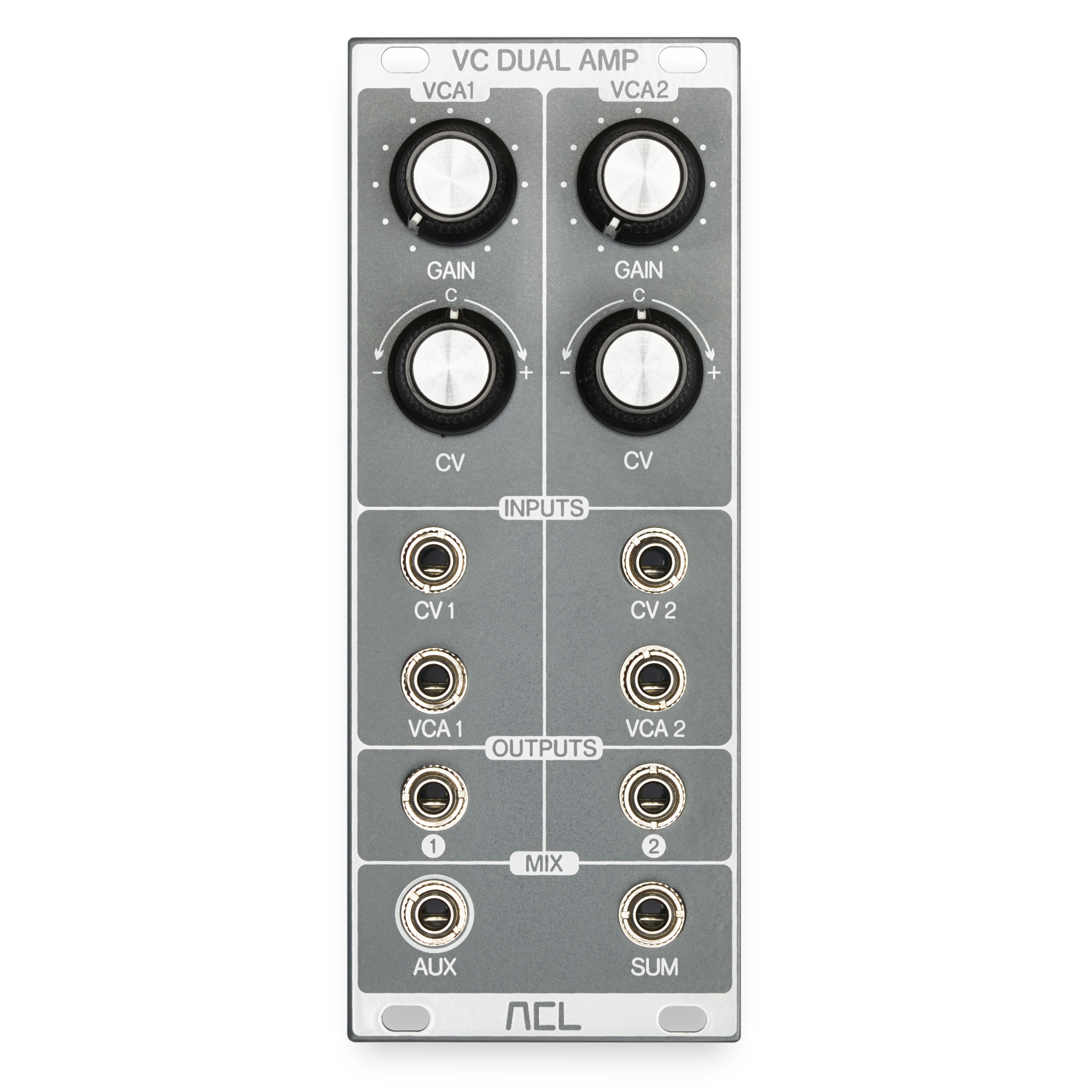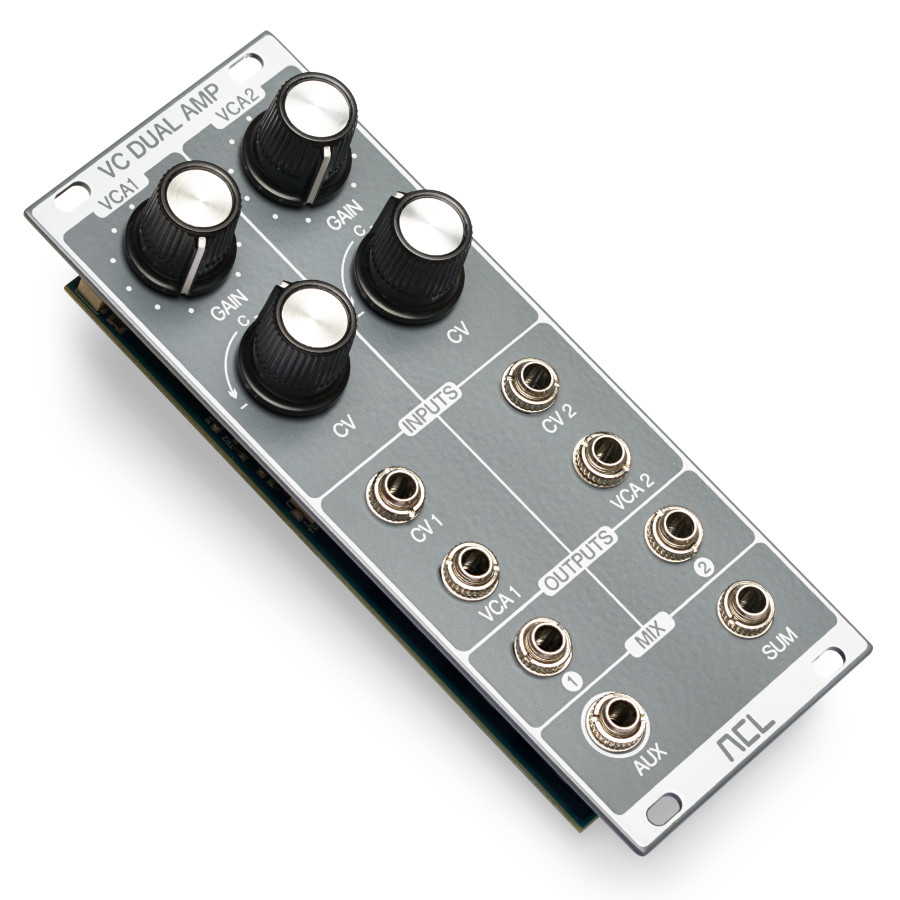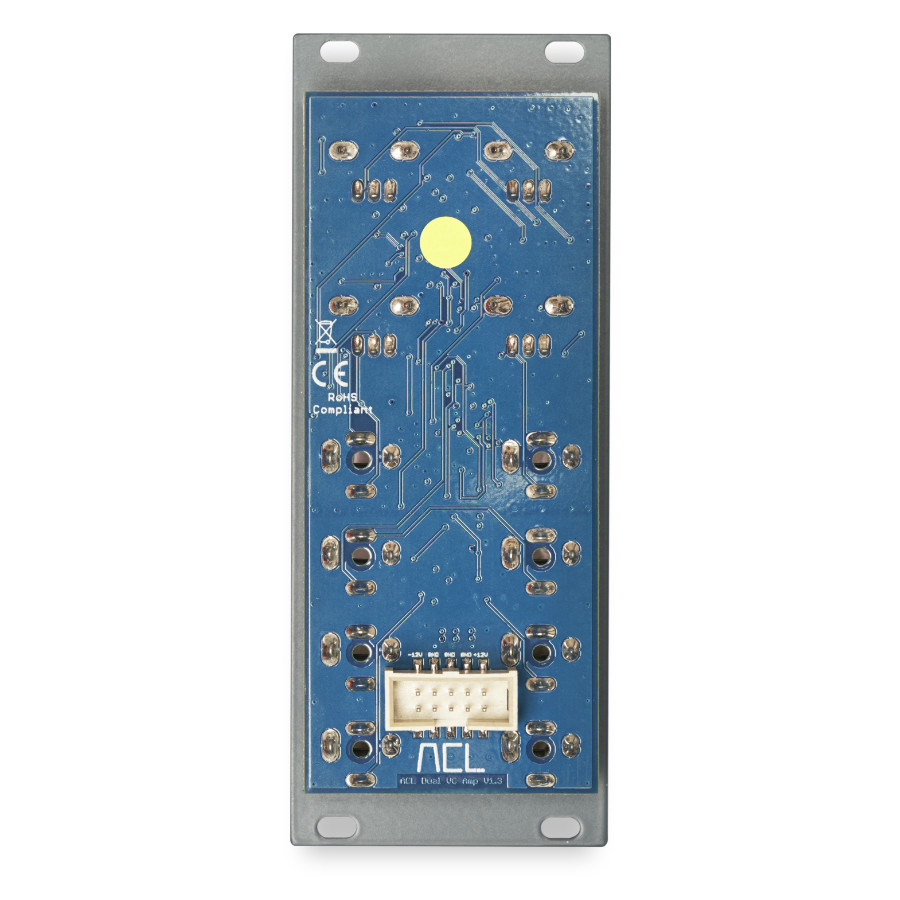VC Dual Amp is not just a VCA, it′s two great VCAs. Amplify signals with unrivalled, oscilloscope-grade accuracy, free from colouration, distortion and bleed. Meanwhile, the DC-coupled signal path allows CV-scaling while the dual topology allows creative crossfading and more.
There′s an old saying in modular circles: you can′t have too many VCAs. But we think that should say ‘you can′t have too many great VCAs’. And that′s what we set out to make – two great VCAs, in one!
Dual VCA delivers unrivalled clarity of sound, amplifying an input signal insanely accurately, without any colouration, distortion, or bleed.
But before we explain why, let′s be completely clear: we know VCAs are one of the least sexy elements in a modular system (although slightly more interesting than power supplies and busboard, perhaps). Still, they are essential, and have a dramatic sound-shaping role.
And there′s always room for some new ideas, as we′ve set out to show.
Classy form
At a glance, things still look pretty simple – four knobs, five inputs and three outputs – but below the surface is what we believe to be a completely new approach. Let′s take a closer look…
The ACL VC Dual Amp module comprises two identical fully discrete linear VCAs. The VCA design is an entirely new circuit, unlike any we have encountered before, based on the kind of circuits found in highly precise measurement devices like oscilloscopes, then adapted to allow gain change with external CV.
A VCA with benefits
And we didn′t just go to all this trouble to be different! Our design offers significant performance advantages:
- very low THD (in the whole linear gain range)
- lower noise than conventional designs
- no crossover-distortion (thanks to a class-A operating mode)
- no overshoots or ringing (because we avoid global feedback for operating point stabilisation and linearisation, using local feedback instead)
- very low CV-feedthrough (due to excellent common-mode rejection)
- no audio-feedthrough from the Input to the Output
- very high dynamic range, offering plenty of headroom
- extremely high bandwidth (0 Hz to 20+ kHz, with no amplitude drops, phase-shifts, or filtering)
- completely DC-coupled signal path (consequently there′s no high-pass filtering of low frequencies and the unit can also be used for CV-voltages).
Elegant form
Layout-wise, VC Dual Amp has matching controls for both VCAs: manual control knob for gain and an attenuator-control for scaling the CV-input.
The audio and CV inputs of VCA 1 are normalised to VCA 2. In other words, if nothing is plugged into Audio 2/CV 2, then the signals from VCA 1 will be recreated there. This is very handy for creating voltage controlled crossfade effects, voltage controlled stereo panning tricks, and other similar processes for which one or both VCA 1 and VCA 2 utilise the same signal.
VC Dual Amp also features a completely DC-coupled signal path, which means it can also process control voltages via the audio in, further expanding the creative possibilities. For example, it could be used to modulate the depth of another modulation, such as velocity-modulated amplitude or the LFO modulation depth of a VCO pitch.
Finally, in addition to the individual outputs for each VCA, there is a Sum-output combining the signals of both, plus the signal from an Aux-input, allowing three different signals to be mixed together. And, of course, these can be audio or CV/control signals.
Smart is sexy
Okay, so we′ve already admitted that no VCA is pin-up sexy, but by now we like to think you′ll agree that this is the kind of VCA that is attractive, fun and interesting enough to have a long and meaningful relationship with. And at some stage we′ll all be glad to have some of that in our lives.
3U Eurorack module, 10 HP wide, compatible with Skiff cases
Current Draw:
34 mA +12V29 mA -12V0 mA 5V
Installation depth:
22 mm deep


